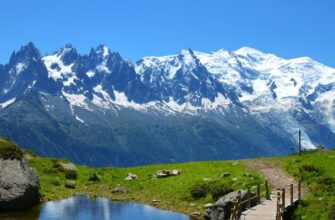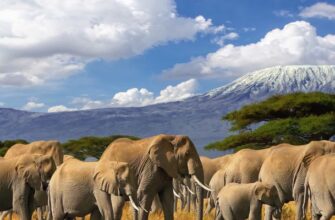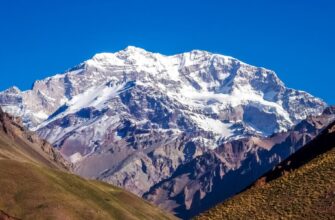Ready for a fantastic expedition? Trekking to Everest base camp is your chance to see the highest mountain in the world up close, towering at 8,848 meters (29,029 feet). It’s the adventure so many dreams about, whether visiting Nepal or just looking for a group or solo trekking holiday.
About 45,000 people try Everest base camp trekking at high altitudes yearly. For many, Everest base camp trekking in Nepal is a once-in-a-lifetime moment. Each step of the journey is filled with excitement and beautiful sights that you’ll remember forever!
However, reaching high altitudes takes work. Consider Everest base camp weather, altitude adjustment, flights, opting for the suitable trekking path, and hiring guides. Don’t forget insurance — many guide companies require it for high-altitude trekking in Nepal.
In this blog, we will share essential tips for your trekking. You will learn what to pack, what to expect, and how to stay safe.
Best time to trek Everest base camp
Deciding the best time to go to base camp Everest is important for clear views, stable weather, and comfortable trekking conditions. So, when’s the right time to go?
The sweet spots are from March to May and September to November. Why? Because those months have the clearest skies and the most stable weather. So, if you dream of those stunning mountain views and trekking comfort, plan your trekking trip during these months! Trust us, it’ll be worth it!
Weather and temperature on Everest
Now, let’s discuss the weather of Everest. It can be incredibly uncertain, shifting from sunny skies to sudden storms in minutes.
Winter: The temperature at Everest peak can drop below -60°C (-76°F). Brr! Even at Everest base camp, it’s freezing. December can bring snow and cold temperatures. In January and February, it gets freezing, making trekking to mount base camp much harder.
Spring: Many trekkers believe the best time to do Everest base camp is spring when the weather is pleasant and mild. The Everest base camp temperature can range from -10°C (14°F) at night to about 10°C (50°F) during the day. By March, the Everest temp will start to warm up, but you can still see snow. April to early June is the Everest climbing season, during which the weather is usually nice.
Summer: During the summer, daytime temperatures at Everest base camp can range from 5°C (41°F) to 15°C (59°F). Sounds comfortable, right? But don’t forget — it’s monsoon season. The trekking trails can get muddy and slippery, and the fog makes it hard to see those amazing views. Imagine trekking through a cloud with your boots sinking into the wet ground! It adds a challenge.
Autumn: If you’re considering trekking, autumn is the best time to go to Nepal Everest base camp! The air feels crisp, and the views are gorgeous. The weather is pretty good from October to November, but it can get a bit windy. Just imagine standing there with a chilly breeze on your face while you take in those jaw-dropping mountain views. Perfect for a selfie, right?
So, beware of the changing temperature of Everest and prepare for different conditions when packing.
Packing list for Everest summer and winter
When heading out for mountain base trekking, packing the right gear is super important. The mountains can throw surprises at you even at the base — like sudden rain showers or rocky paths — and you want to be ready for anything! Picture this: you’re hiking in the chilly air without a warm jacket or slipping around because your shoes don’t have enough grip — no thanks! That’s why being prepared is key for safe trekking. So, let’s break down what you should bring for your summer and winter adventures!
Warm season packing list:
- Lightweight Layers: T-shirts, long-sleeve shirts, and lightweight fleece.
- Waterproof Jacket: Essential for rain.
- Trekking Pants: Quick-dry for warm weather.
- Sun Protection: Sunglasses, sunscreen, and a hat.
- Comfortable Footwear: Sturdy trekking shoes.
- Hydration Gear: Reusable water bottles and purification tablets.
Cold season packing list:
- Warm Layers: Thermal base layers and insulated jackets.
- Waterproof Jacket: Keeps you dry and warm.
- Insulated Pants: Waterproof pants are essential.
- Winter Accessories: Gloves, a warm hat, and a scarf.
- Heavy-duty Footwear: Insulated trekking boots.
- Additional Gear: Crampons and trekking poles for icy conditions.
You’ll be set for a fantastic trek to Everest base camp with the right gear!
Everest base camp trek information
The Everest base camp height gives you access to jaw-dropping sights of the surrounding mountains, like the Khumbu Icefall. It also has essential facilities, making it a great resting spot for those trekking to Everest base camp.
Basic information about Everest base camp
Here are some essential facts of MT Everest camp every trekker should know:
- The elevation at Everest base camp is 5,364 meters (17,598 feet), making it one of the highest trekking destinations in the world.
- The camp comes alive each spring for the 2-3 months of the climbing season when everything is buzzing with activity.
- Hundreds of climbers, guides, and porters gather here, creating a unique mountaineering village during peak season.
- The nearest city is Lukla, and the base camp is reached after about 8 to 12 days of trekking.
- The base camp provides essentials like tents, food, and communication facilities for climbers.
Where is Mount Everest located?
Mount Everest is located in the Himalayas, on the border between Nepal and Tibet. The Everest base camp is situated in the Khumbu region of Nepal, at the foot of the mountain.
How was Mount Everest formed?
The collision of the Indian and Eurasian tectonic plates created today’s majestic peak. The first successful summit expedition was in 1953, making the Nepal trekking Everest base camp a historic hub for climbers and trekkers.
Everest base camp 1-4
As climbers make their way to the summit of Mt. Everest, they will pass through several camps along the route. Here’s an overview of these essential camps:
- Everest camp 1: Located at 6,065 meters (19,900 feet), this camp marks the first significant stop after base camp.
- Everest camp 2: Situated at 6,400 meters (20,965 feet), it offers climbers a chance to rest and adjust to the altitude.
- Everest camp 3: Found at 7,200 meters (23,622 feet), it is crucial for acclimatization before the final push.
- Everest camp 4: Positioned at 7,950 meters (26,085 feet), Everest base camp 4 is the last stop before attempting the summit.
Each camp is essential for climbers to acclimate and prepare for the challenges ahead.
How many days to climb Everest
Most climbers spend about 60 days on their expedition to allow for acclimatization and safety. Different Everest routes can affect the total time spent.
Map of Mount Everest routes
The Everest base camp map shows various paths leading to essential stopping points, including Everest camp I, Everest camp II, Everest camp III, and camp IV.
Popular routes to reach Everest base camp include:
- Classic Route via Lukla: This is the go-to path! It kicks off with a flight from Kathmandu straight into Lukla.
- Jiri Route: A longer trek starts from Jiri and offers cultural experiences.
- Gokyo Lakes Route: An alternative path that passes through the stunning Gokyo Lakes.
Nearby cities, such as Kathmandu and Lukla, are vital starting points for trekking. Kathmandu is the capital of Nepal and provides essential trekking services, including flight connections to Lukla, gear shops, and tour operators.
Everest base camp trekking cost
The Everest base camp trek price varies based on the services you choose. On average, trekking costs between $1,200 and $3,000 per person. This generally includes trekking permits like the Sagarmatha National Park Permit and the Khumbu Rural Municipality Permit, as well as accommodation, meals, and basic trekking guide services.
Additional costs include gear, travel insurance, tips, and flights to Lukla. Any extra expenses in Kathmandu are separate. The total trekking cost can rise depending on your preferences for comfort or added services.
Everest base camp trek difficulty
The trek’s a solid challenge but doable! You don’t need climbing skills, just decent fitness. Get ready for long trekking days, steep climbs, and the high altitude — acclimatization is essential. Most routes build in rest days to help you adjust to the thin air and avoid altitude sickness. With a bit of prep, it’s tough but worth it!
Everest base camp trekking routes overview
Below is an overview of popular trekking routes, their difficulty levels, durations, and estimated costs:
| Trekking route | Difficulty level | Duration | Price per person | Key points |
| Classic Route via Lukla | Moderate | 12-14 days | $1,200 – $3,000 | The most popular trekking route, with stunning views, acclimatization stops |
| Gokyo Lakes Route | Moderate-challenging | 15-18 days | $1,500 – $3,500 | Alternate scenic trekking routes with fewer crowds |
| Jiri to Everest Base Camp | Challenging | 20-22 days | $2,000 – $4,000 | Longer trek, more cultural immersion, more acclimatization |
| Everest Peak Climb | Extremely challenging | 60+ days | $30,000 – $100,000 | Requires technical skills |
The Everest base camp trekking itinerary typically spans 12-14 days and covers around 130 km (80 miles). Popular stops include Namche Bazaar and Dingboche, allowing acclimatization before reaching base camp.
How many people have climbed Mount Everest?
Over 6,000 people have summited Mount Everest to date. Sadly, around 310 Everest deaths have occurred since expeditions began. Safety first, acclimatize right, and come prepared — these are musts for anyone daring to climb Everest base camp and higher!
Travel insurance for trekking to Everest base camp
Travel health insurance is necessary when trekking to Everest base camp. Trekking in Nepal’s mountains carries risks, and emergencies can happen, even to experienced trekkers. Hospitals are far away, and evacuation is costly.
Most guide companies include trekking insurance on their “must-have” list. It should cover medical emergencies, trekking high altitudes (up to 5,500 meters), and emergency evacuations, including by helicopter.
Here’s a list of the main insurance requirements for trekking to Everest base camp:
- Country Coverage: Your trekking insurance plan must cover Nepal.
- High Altitude Coverage: Make sure your trekking insurance trails up to 5,500 meters — that’s the height of Everest base camp!
- Medical Coverage: Should cover emergency medical care and COVID-19 coverage.
- Helicopter Evacuation: Trekking insurance covers emergency helicopter rescues in serious cases.
- Search and Rescue: Make sure trekking insurance includes search and rescue, just in case.
- Sufficient Coverage Amount: Trekking insurance coverage should be at least $30,000 to $35,000.
- Extra Days: Consider buying insurance for a trekking policy for a few days longer than your planned trek in case of delays or extended medical needs.
Check if your insurance for trekking to Everest base camp is valid in Nepal and includes activities like trekking at high altitudes. We recommend choosing a health policy that also covers COVID-19. For a safe and worry-free trekking trip to base camp, buy travel protection from Auras Insure — it meets all the requirements and is ideal for group and solo trekking.
Let’s sum up
The Everest base camp trip is something you’ll remember for a lifetime! Reaching the base camp at 5,364 meters (17,598 feet) is a big deal. While only climbers get to see the view from the top of Mount Everest at night, trekkers enjoy breathtaking sights of the Himalayas along the way.
The truth is, the base camp trekking can be tough. You don’t need to be a pro climber, but being in good shape helps. And don’t forget to take it easy at high altitudes — give your body time to adjust.
The best time to hit the Everest base camp hike is during the bright seasons, like spring and autumn. The weather is usually nice, and you’ll get those stunning views.
And here’s a big tip: make sure you have travel insurance with trekking included. If something goes wrong at high altitude, it can save you from unexpected expenses. With the right prep and coverage, your trekking to Everest base camp will be an exciting and worry-free experience!
FAQ
Is trekking to Everest base camp dangerous?
Yes, trekking to the mount base camp can be risky due to altitude sickness, unpredictable weather, and challenging terrain. Proper preparation is essential.
How cold is Mount Everest?
At the Mt Everest South Summit, winter temperatures can drop below -60°C (-76°F). At Everest Base Camp, temperatures range from -10°C (14°F) at night to 10°C (50°F) during the day, so it’s still quite chilly there as well.
How high is the Everest base camp?
Everest base camp is located at 5,364 meters (17,598 feet). It’s a perfect rest spot for climbers and trekkers.
How was Everest formed?
Mount Everest was formed by the collision of the Indian and Eurasian tectonic plates, which raised the Himalayas.
How long does it take to climb Mount Everest?
Climbing Mount Everest usually takes about two months, including time for acclimatization at the base camp and other rest camps for climbers.
Where is Mount Everest?
Mount Everest is located in the Himalayas, on the border between Nepal and the Tibet Autonomous Region of China.
How much does it cost to go to base camp?
The trek to Everest base camp typically costs $1,000 to $3,000, depending on the trekking company and the services included.
How long did it take to climb Mount Everest?
The first successful ascent took about 12 hours to reach the summit from the South Col.
How can I climb Mount Everest?
Climbing Everest requires physical training, experience in high-altitude climbing, hiring a guide, and securing permits.
How many people have climbed Mount Everest?
As of 2023, over 10,000 climbers have successfully reached the south summit Everest.
Is Mount Everest a volcano?
No, Mount Everest is not a volcano. It is a mountain formed by tectonic activity.
Where is the best time to visit Everest base camp?
You have the perfect conditions during the pre-monsoon months from March to May and the post-monsoon months from September to November.








